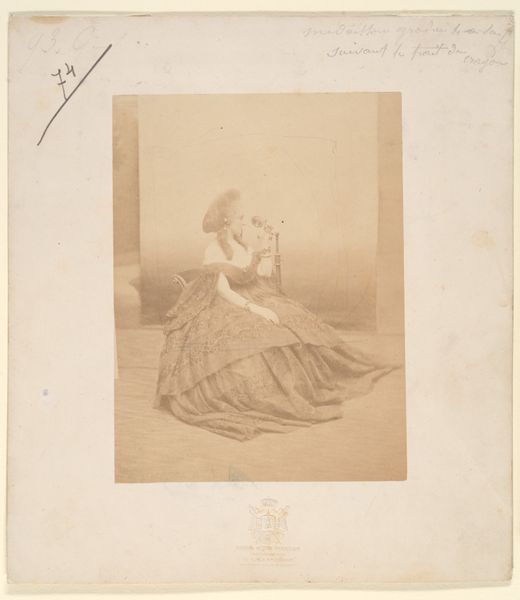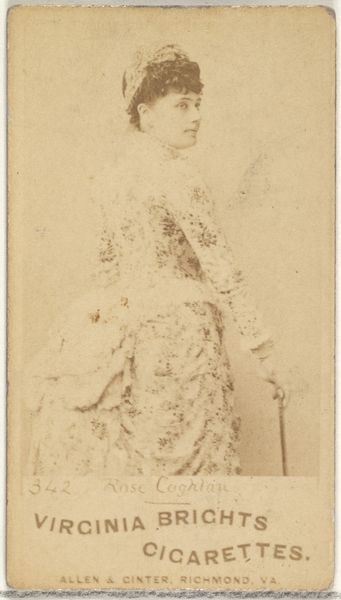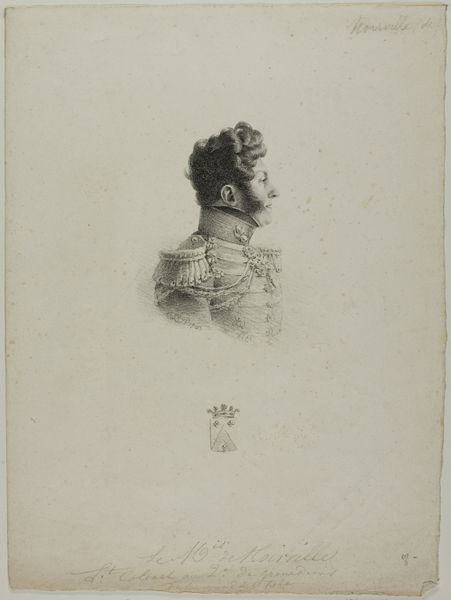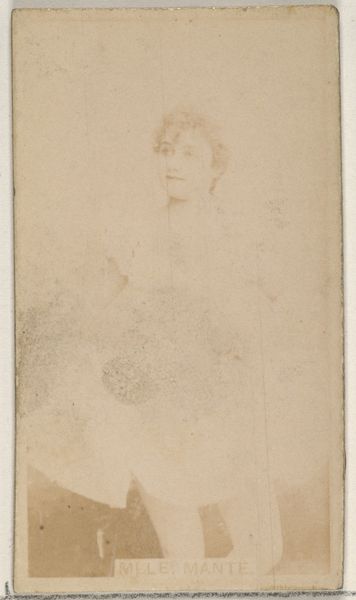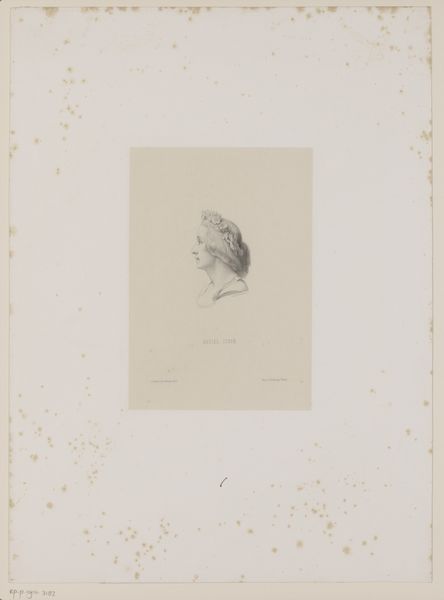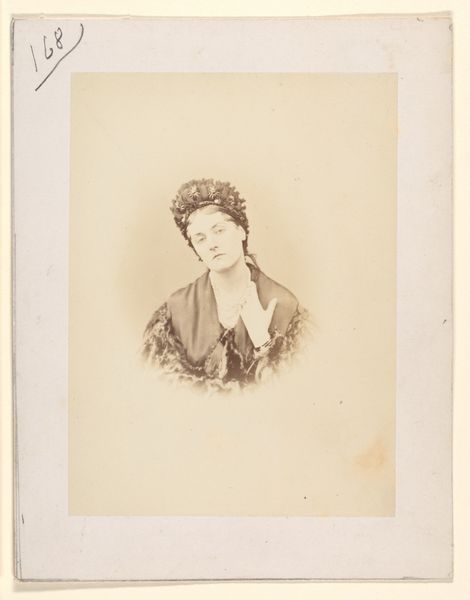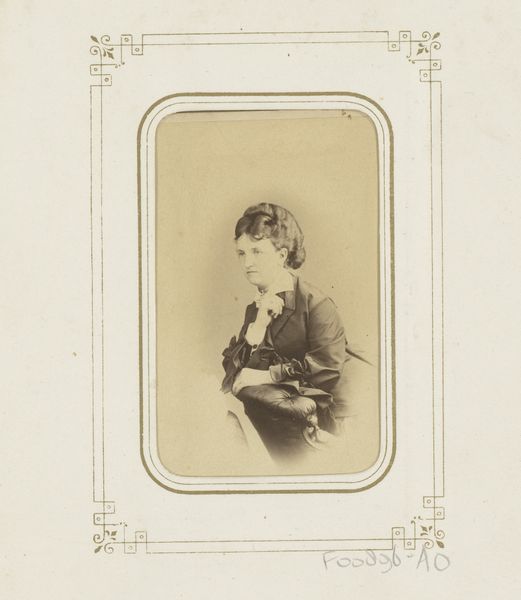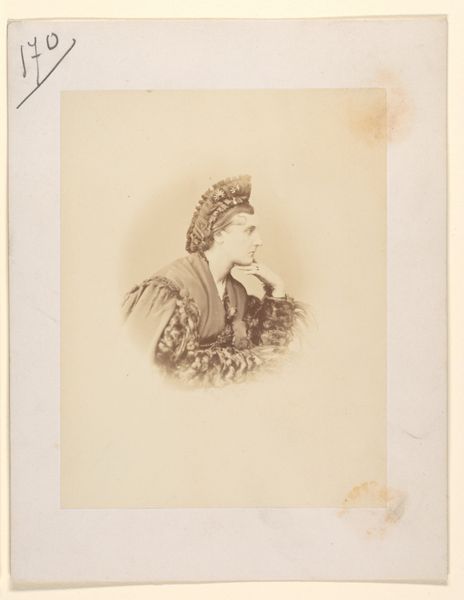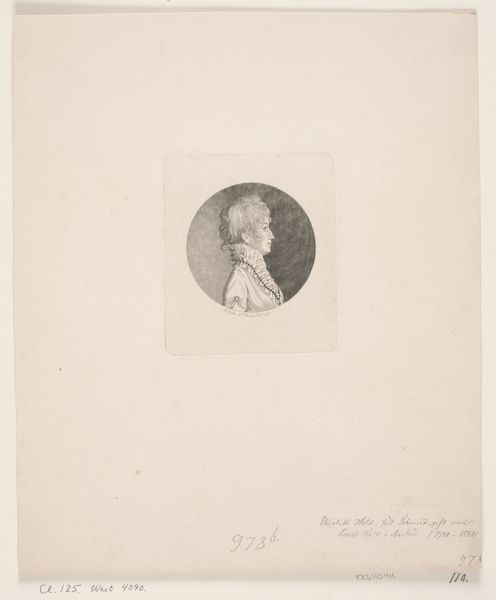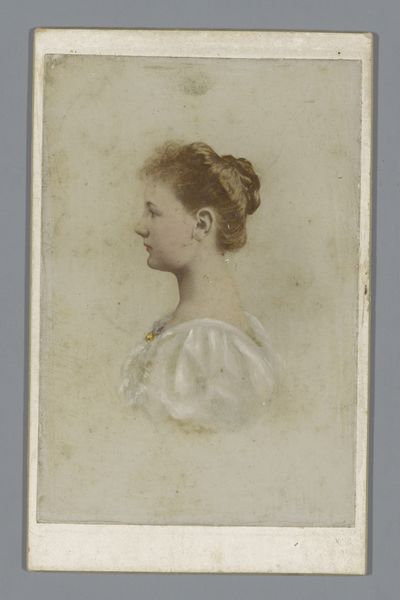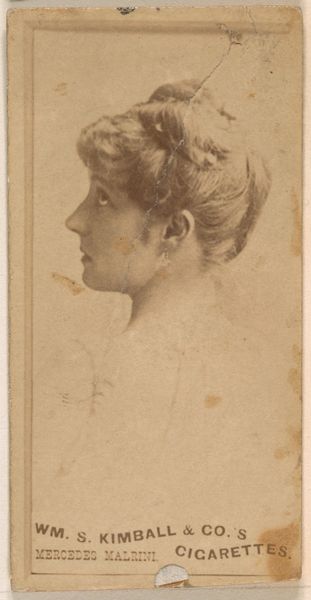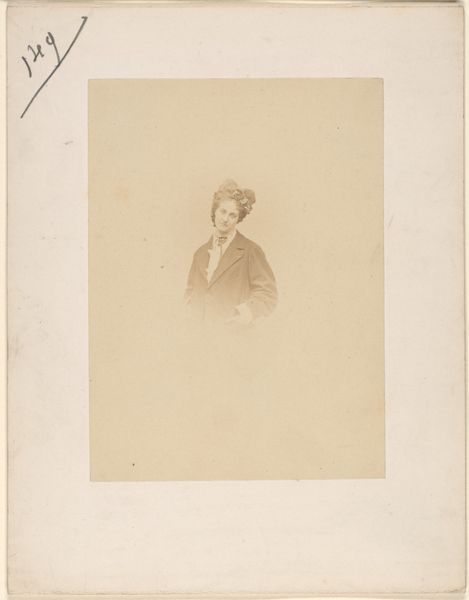
photography, albumen-print
#
portrait
#
photography
#
albumen-print
#
profile
Dimensions: 7.3 x 10.5 cm. (2 7/8 x 4 1/8 in.)
Copyright: Public Domain
Curator: Here we have Pierre-Louis Pierson's photograph, "Prière," taken sometime in the 1860s. Editor: There’s an almost ethereal quality to it. The soft focus and delicate albumen print really lend themselves to this feeling of introspection. Curator: Absolutely. The choice of albumen print, a popular photographic process at the time, contributes to that dreamy aesthetic. What intrigues me most is the public image-making at play during the Second Empire, which, of course, deeply influenced Pierson’s work at the court of Napoleon III. The photograph became a way to both elevate and, in some ways, standardize an ideal of beauty and status. Editor: Interesting. I'm immediately drawn to the tactile aspect; it's not just about appearance. The process itself feels tied to the sitter's status—these prints weren’t easily produced and were meant for circulation amongst a wealthy elite. One can almost feel the weight of the material realities supporting this image of genteel femininity. Curator: Precisely, this wasn’t about raw individual expression; it was deeply embedded in social power structures. Her contemplative pose, her luxurious dress… These elements constructed a narrative about the role of women in the court, her submission but also influence on culture at the time. Editor: I agree completely. I find myself contemplating the labor that went into every aspect, from the dress' construction to the photograph's processing and printing. Who created that dress and out of what materials? The woman shown in this photo certainly wasn't a seamstress but others were engaged in material practices on her behalf. Curator: And, to that end, what was the meaning behind circulating these types of images at court and beyond? Editor: To circulate power, pure and simple. As an object, this piece gives shape to certain values of this society; how women perform this femininity also performs the era's aspirations of empire. Curator: The intersection of photography and power during this period remains fascinating, I always learn from discussing this. Editor: Agreed; thanks for providing your historian’s perspective. It prompts so many avenues for thinking about materiality.
Comments
No comments
Be the first to comment and join the conversation on the ultimate creative platform.
